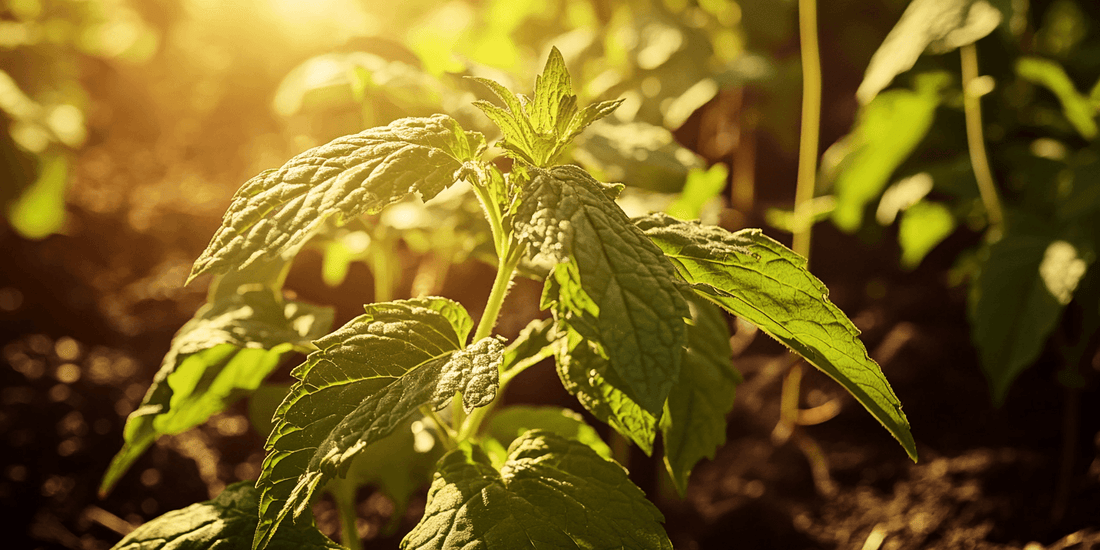Types of Mint
When it comes to mint, the variety available is astounding. Each mint type has unique characteristics that cater to different needs and preferences. Knowing the distinct qualities of each variety can help you select the best mint seeds for your garden.
Peppermint
Peppermint (Mentha x piperita) is one of the most popular mint varieties, valued for its intense, cooling flavor and aromatic leaves. This hybrid plant, a cross between watermint and spearmint, is commonly grown for its culinary and medicinal uses. Peppermint seeds produce robust plants that thrive in rich, moist soil and partial to full sunlight.
- Common Uses: Tea, desserts, essential oils, and natural remedies for digestion.
- Growing Tip: Regular pruning encourages bushy growth and prevents the plant from becoming leggy.
Spearmint
Spearmint (Mentha spicata) is another well-known variety. Compared to peppermint, it has a milder, sweeter flavor that is often used in savory dishes, beverages, and herbal remedies.
- Common Uses: Salads, mojitos, sauces, and chewing gum flavoring.
- Growing Tip: Spearmint is highly invasive, so plant it in containers or raised beds to control its spread.
Chocolate Mint
For gardeners with a sweet tooth, Chocolate Mint is a must-try variety. This peppermint hybrid has a hint of chocolate aroma, making it a delightful addition to desserts and beverages.
- Common Uses: Baking, hot chocolate, ice cream, and flavored teas.
- Growing Tip: Provide plenty of moisture to maintain the rich flavor profile.
Apple Mint
Apple Mint (Mentha suaveolens) is a unique variety with fuzzy leaves and a subtle fruity aroma. It’s perfect for gardeners seeking something a bit different from traditional mint varieties.
- Common Uses: Garnishes, fruit salads, and aromatic teas.
- Growing Tip: Apple Mint thrives in full sun to partial shade and adapts well to a range of soils.
Other Popular Mint Varieties
- Orange Mint: Known for its citrusy aroma.
- Pineapple Mint: A variegated mint with a sweet tropical scent.
- Corsican Mint: A low-growing variety ideal for ground cover.
Seed Quality
Choosing high-quality seeds is critical to the success of your mint garden. The vigor and productivity of your plants largely depend on the quality of the seeds you start with.
Characteristics of High-Quality Mint Seeds
When searching for the best mint seeds, keep these factors in mind:
- Germination Rate: Look for seeds with a high germination rate, typically above 80%. This ensures better success in sprouting.
- Organic Certification: Opt for organic mint seeds when possible. These seeds are grown without synthetic chemicals, supporting sustainable gardening practices.
- Seed Freshness: Fresh seeds are more likely to germinate successfully. Check the packaging date before purchasing.
- Source Credibility: Purchase from reputable suppliers that prioritize seed quality and sustainability. Agricultural extension programs often recommend trusted suppliers for quality assurance.
Starting Mint Seeds
Mint seeds are tiny and require careful handling. Here are a few tips for starting mint seeds successfully:
- Use Light, Well-Draining Soil: Mint seeds need soil that allows adequate airflow and drainage.
- Surface Sowing: Sow the seeds on the soil surface and lightly press them in, as they require light for germination.
- Water Gently: Mist the soil with water to keep it moist without washing away the seeds.
- Provide Consistent Warmth: Mint seeds germinate best at temperatures between 65-75°F.
Hybrid Mint Facts
Hybridization in mint plants has given rise to an array of exciting mint types with unique flavors and aromas. Understanding the nature of hybrid mint plants can help you decide whether they are suitable for your garden.
What is Hybrid Mint?
A hybrid mint is a cross between two or more mint varieties, often resulting in plants with enhanced characteristics such as stronger flavors, improved disease resistance, or distinct aromas. Peppermint, for example, is a naturally occurring hybrid of spearmint and watermint.
Pros of Hybrid Mint Plants
- Unique Flavors: Hybrids like chocolate mint and pineapple mint offer flavors not found in traditional varieties.
- Versatility: Hybrid mints can cater to specific culinary or ornamental needs.
- Improved Traits: Many hybrids are more vigorous and pest-resistant than their parent plants.
Challenges with Hybrid Mint
- Seed Viability: Most hybrid mint plants do not produce viable seeds, so they are typically propagated through cuttings or root divisions.
- Invasiveness: Like other mints, hybrids can spread aggressively if not contained.
Growing Organic Mint
Organic gardening methods are essential for creating a healthy and sustainable garden. Here are some tips for cultivating mint organically:
- Use Organic Seeds: Start with organic peppermint seeds or other mint varieties to ensure a chemical-free foundation.
- Compost-Enriched Soil: Enrich your soil with compost to provide nutrients and improve its structure.
- Natural Pest Control: Use companion planting (e.g., planting mint near cabbage to deter pests) and natural remedies like neem oil to keep pests at bay.
- Mulching: Mulch around your mint plants to retain soil moisture and suppress weeds without synthetic chemicals.
- Water Wisely: Water deeply but less frequently to encourage healthy root development.
In Summary
Mint is a rewarding herb to grow, offering a range of flavors and aromas that can enhance your cooking, teas, and even your garden's fragrance. By understanding the mint varieties available, selecting high-quality seeds, and considering hybrid mint plants' unique traits, you can choose the best mint seeds for your garden. Opt for organic and sustainable growing practices to create a thriving and eco-friendly mint patch. Whether you're drawn to the refreshing coolness of peppermint or the sweetness of chocolate mint, there's a mint type perfect for every gardener.
For more information, see our article on Grow Lush, Healthy Mint Plants.





